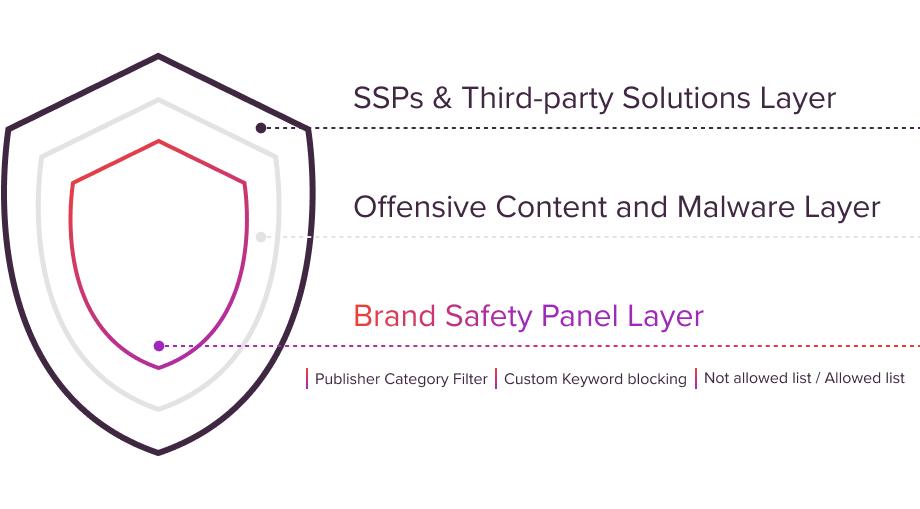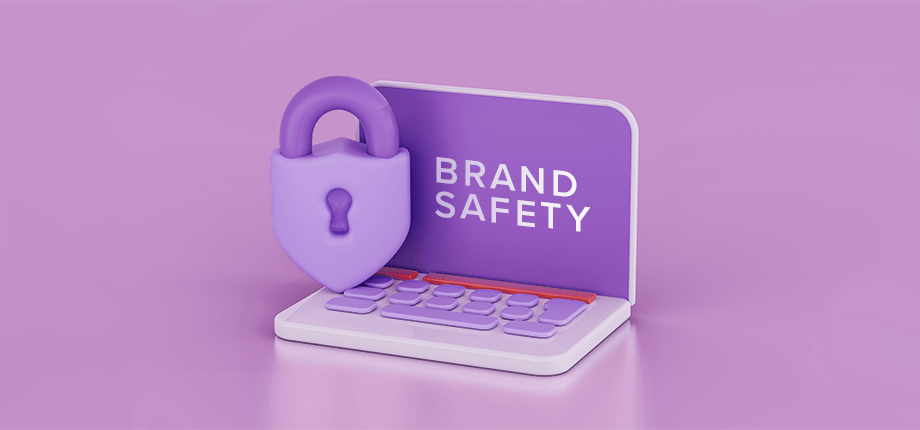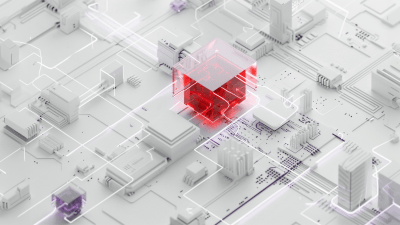Last Updated on: 24th May 2024, 09:42 pm
Nowadays, when so many advertising activities take place online, it is extremely important to not only look after the marketing creations used, but also the advertising context. Contextual adjacencies will help to effectively protect brand reputation as well as keep existing and attract new customers at the same time. How can you protect brand reputation while advertising online? Which brand safety solutions should be taken into consideration?
In this article you will learn:
- Why a brand is the most valuable asset of an organization
- How important it is to control where your ads are displayed
- What is brand safety and why should it be put at the core of your strategy
- How RTB House uses NLP to help you protect your brand
Table of Contents:
- Brand – the most important asset of a company
- Brands struggle to control where they are displayed
- Why should brand safety be the core of every strategy?
- What are brand safety solutions?
- RTB House’s brand safety solution leverages natural language processing
- How efficient can AI be?
- Brand safety in a cookieless future
Brand – the most important asset of a company
A Brand is by far the most important intangible asset that a company owns. 71% of consumers are more likely to buy from a brand name that they recognize. Similarly, around 81% of consumers consider brand trust to be a key factor when deciding to make a purchase. Brand reputation can make or break a company, and your agency’s reputation for protecting your client’s brand will be essential to its success.
One way to do this is by focusing on positive brand reinforcement and tying your brand in with positive social movements. For example in 2020 Nike launched its “For Once, Just Don’t Do It” campaign, tied into raising awareness about racism in America. The ad received broad support, and was considered a more authentic response than those offered by other brands, providing Nike a brief boost in public image.
Despite this positive campaign Nike is also an example of the difficulty with rebuilding brand image. For a time the sportswear company was synonymous with sweatshops, and despite progress it is still struggling to shed that image. Nike is far from being the only company with dubious contractors, but this example demonstrates the first rule of branding – “It’s easier to maintain a good brand, than fix a bad one”.
Brands struggle to control where they are displayed
As more ads move online, and ad-bidding networks become increasingly large, policing where your client’s content is displayed is more challenging than ever. The last thing a brand wants is to be displayed in a compromising position that might go viral.
Unfortunately this is a common occurrence. In 2017 YouTube lost millions in advertising revenue as major brands withdrew their advertising dollars in protest of their content appearing alongside videos that promoted extremist views. Things have improved since then but ads appearing next to controversial topics still remains a hot issue. Around 2/3 of customers believe that ads should not appear next to controversial news topics, and 85% of customers said they would avoid topics that appeared next to COVID-19 conspiracies.
Studies have found that consumers believe that brands intentionally place content next to malicious or negative content. For example, seeing a soda company advertise next to a video on diabetes would make consumers 50% less likely to recommend that brand to others.
Read our ultimate guide on brand safety to learn more about how this works.
Why should brand safety be the core of every strategy?
In today’s digital advertising landscape, where programmatic advertising and real-time bidding are common, brand safety becomes even more critical. You could spend hundreds of hours and thousands of dollars crafting the perfect campaign, only to have the algorithm place it alongside negative content. Here are a few reasons why placement matters:
- Protecting brand reputation: A brand’s reputation is one of its most valuable assets. A single association with inappropriate or harmful content can tarnish a brand’s image and jeopardize consumer trust. Prioritizing brand safety helps protect the brand’s reputation and maintain a positive image in the eyes of consumers.
- Adherence to ethical standards: Companies have ethical and social responsibility obligations. Ensuring brand safety means avoiding association with content that promotes hate speech, violence, misinformation, or other harmful behaviors, demonstrating a commitment to ethical standards.
- Allowed and not-allowed lists: Maintaining lists of websites or content categories that are deemed either unsafe (not-allowed lists) or safe (allowed lists) for advertising. Ads are then placed or excluded based on these lists.
- Regulatory compliance: Many countries have regulations and advertising standards that prohibit brands from advertising near certain types of content, such as alcohol and tobacco ads alongside content targeting minors. Compliance with these regulations is essential to avoid legal consequences.
- Consistency in messaging: Brand safety ensures that a brand’s messaging remains consistent with its values and objectives. Misplaced ads can send mixed or contradictory messages, confusing customers and diluting the brand’s identity.
- Ad Effectiveness: Inappropriate ad placements can lead to ad blindness, where consumers ignore or block ads. Brand-safe environments increase the chances of ads being seen and positively received by the target audience, ultimately improving ad effectiveness.
- Return on Investment (ROI): Brand safety practices can enhance the overall ROI of advertising campaigns. By ensuring that ads are placed in contexts that resonate with the brand’s values and the target audience’s interests, campaigns are more likely to yield positive results.
- Consumer Experience: Ensuring that ads do not disrupt or offend consumers’ online experience contributes to a more positive online environment. Brands that respect consumers’ digital experiences are likely to be better received.
What are brand safety solutions?
Brand safety solutions are a set of strategies, tools, and practices employed by advertisers and digital marketers to protect a brand’s reputation and ensure that their ads are not associated with harmful or inappropriate content on the internet.
Your brand safety strategy should concentrate on crafting perfect brand suitability, which means not only avoiding negative adjacency, but also identifying positive adjacency that will support you in building and reinforcing your brand. Controlling contextual adjacencies of ads means not only taking brand safety to another level but also positively impacting ROI.
There are existing solutions that you probably already use, including blocking unsafe web pages. However, given the potential risks associated with programmatic advertising and the vast amount of online content, there’s no such thing as too many brand safety tools. Let’s take a look at a few more solutions worth implementing:
- Content filtering: Using automated algorithms and keyword-based filters to ensure that ads do not appear alongside content that is inappropriate, offensive, or controversial. This includes avoiding placement next to hate speech, violence, adult content, and other sensitive topics.
- Contextual targeting: Analyzing the context and topic of the content where ads will be placed to ensure alignment with the brand’s values and messaging. This can be done using natural language processing and machine learning algorithms.
- Real-time monitoring: Continuously monitoring where ads are being displayed and taking action if they appear in inappropriate or high-risk environments. Real-time monitoring can help prevent ad placements next to breaking news stories or emerging controversies.
- Ad placement control: Offering advertisers the ability to have more control over where their ads appear, including selecting specific websites, content categories, or geographic regions for ad placements.
- Reporting and analytics: Providing detailed reports and data on where and how ads are displayed, enabling advertisers to make informed decisions and optimize their brand safety strategies.
Although advertisers aim to strike a balance between reaching their target audience and protecting their brand from harm or negative associations, this is not an easy task. If you’re using Google Ads, you are reaching out to a network of more than 2 million apps and sites. No matter how dedicated you are, there will always be a risk that your content is shown alongside negative content. This is where our Brand Safety solution comes in.
RTB House’s brand safety solution leverages natural language processing
Rather than forcing you to check each website individually, an impossible task, RTB House uses Deep Learning powered natural language processing (NLP). How does it work? First, data is collected from various sources across the internet. This includes URLs, titles and metadata, and website content. Then, the data is analyzed and interpreted to classify websites and determine their suitability for ad placement. This precise inspection is a great way for brands to protect themselves while maintaining an appropriate level of reach.

The core of our solutions is called the Brand Safety Panel Layer, which is customized for each client’s needs. It has the ability to restrict particular websites, content, or applications and utilizes our Context AI engine to classify articles, eliminating those that advertisers prefer not to be associated with. This feature makes it a powerful, yet adaptable tool.
How efficient can AI be?
Our Brand Safety solution blocks around 80 million harmful impressions per day. What is more, best in class solutions are designed to be fully customized to follow your brand safety policy. They filter all traffic prior to buying ad placements, which can significantly lower budget waste. Additionally, brand safety tools should offer a granular scale of filtering to allow you to create a tailor-made strategy.
AI-powered solutions should also predict the impact on the traffic of the campaign before applying policies and work on transparent and semi-transparent URLs. The important part is also transparent reporting, enabling you to understand exactly what has been filtered as per your settings.
By using artificial intelligence, in particular Deep Learning, it is possible not only to take care of the right neighborhood for a brand’s ads, but also better understand customer’s needs and find the most effective ways to target them and engage in interactions that will result in a high return on investment.
Such a solution comes as a standard component of all of RTB House’s product offers and gives agencies an unparalleled amount of control over their client’s brand safety, and provides them with the tools to prove it.
Brand safety in a cookieless future
As you can see, maintaining a brand’s reputation while advertising online is an extremely difficult task, and it will not become any easier as third-party cookies become history.
Although there are many brand safety tools available, not all of them are built with a cookieless future in mind. At RTB House, we developed a brand safety solution based on contextual targeting advertising techniques. Thanks to this, our technology will continue to function, even after third-party cookies are depreciated.
If you want to learn more about how RTB House can help boost your brand safety today, contact us and take a step towards protecting your brand‘s reputation while advertising online.





